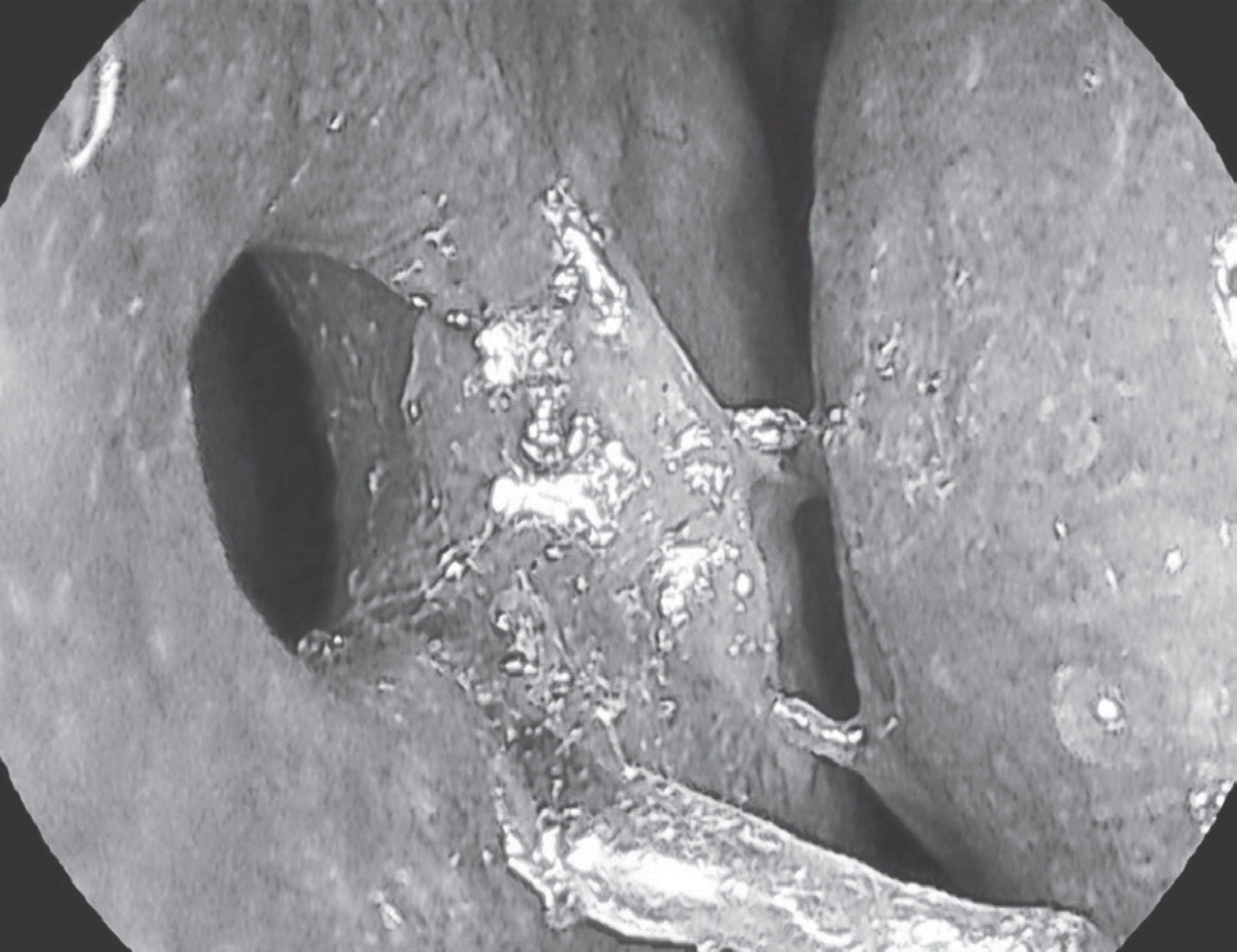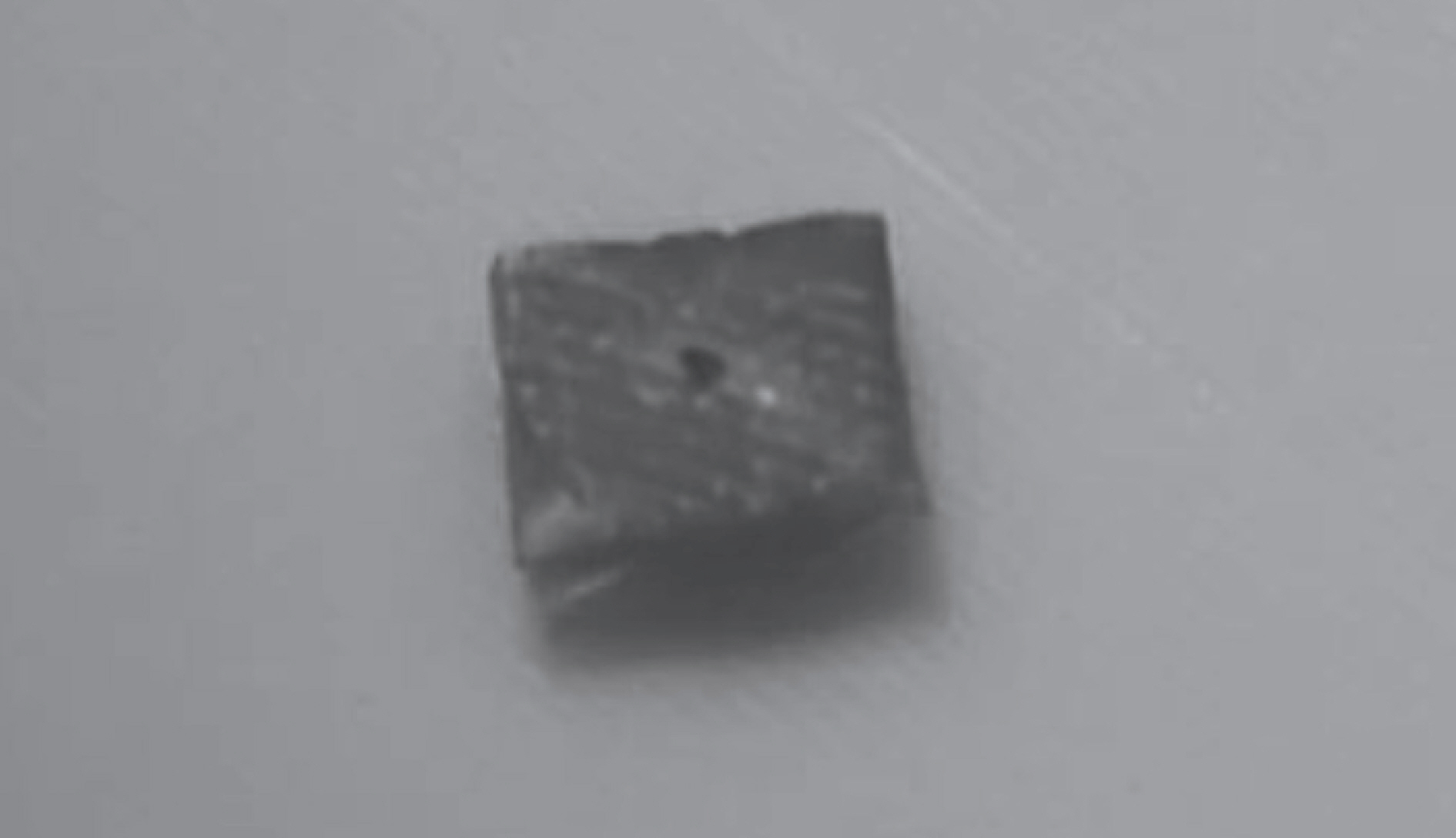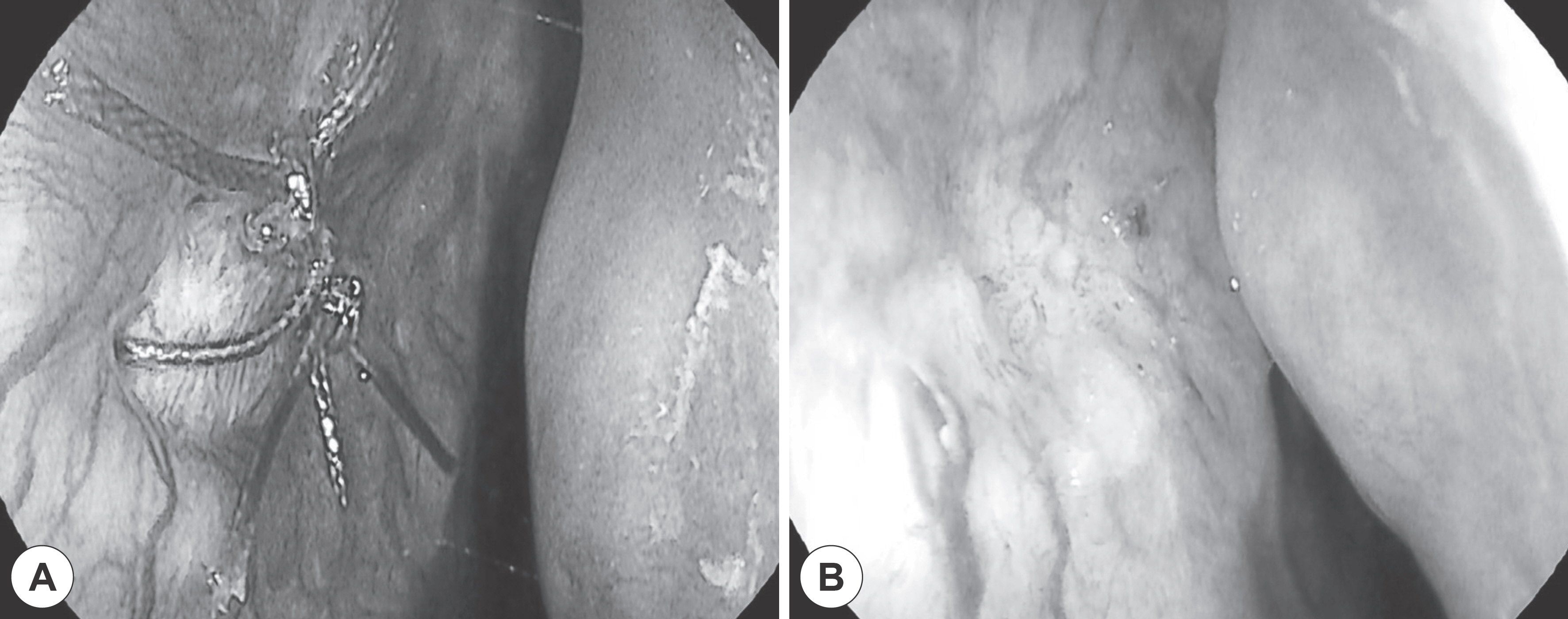J Rhinol.
2019 Nov;26(2):127-131. 10.18787/jr.2019.26.2.127.
Repair of Nasal Septal Perforation Using Polycaprolactone Plate and Temporalis Fascia Graft
- Affiliations
-
- 1Department of Otolaryngology-Head and Neck Surgery, Chosun University College of Medicine, Gwangju, Korea. happyent@naver.com
- KMID: 2465546
- DOI: http://doi.org/10.18787/jr.2019.26.2.127
Abstract
- Trauma is the predominant cause of septal perforation resulting from surgical operation for nasal septum including submucosal resection. A 24-year-old female patient was diagnosed with nasal septal perforation after septoplasty. The patient manifested no specific symptoms except for occasional nasal bleeding, whistling and stuffy nose. Nasal septal perforation measuring 5×5 mm² in size was observed at the anterior portion of nasal septum. The present study involves the repair of nasal septal perforation employing a polycaprolactone (PCL) plate and temporalis fascia graft, and discusses the consequences of complete closure of perforation without complications.
Keyword
MeSH Terms
Figure
Reference
-
References
1. Yang SC, Lee KB, Lee JH, Kim CH. Repair of the septal perforation by temporalis fascia autografting and mucosal advancement fap. Korean Journal of Otorhinolaryngology-Head and Neck Surgery. 1996; 39(9):1492–96.2. Mocella S, Muia F, Giacomini PG, Bertossi D, Residori E, Sgroi S. Innovative technique for large septal perforation repair and radiological evaluation. Acta OtorhinolaryngologicaItalica. 2013; 33(3):202.3. Lee CU, Kang SH, Lee HS, Ahn KS. Repair of large septal perforation by external rhinoplasty approach. Korean Journal of Otorhinolaryngology-Head and Neck Surgery. 1991; 34(6):1232–36.4. Morse J, Harris J, Owen S, Sowder J, Stephan S. Outcomes of nasal septal perforation repair using combined temporoparietal fascia graft and Polydioxanone plate construct. JAMA Facial Plast Surg. 2019; 21(4):319–26.
Article5. Delaney SW, Kridel RWH. Contemporary trends in the surgical management of nasal septal perforations: A community survey. Facial Plast Surg. 2019; 35(1):78–84.
Article6. Cassano M. Endoscopic repair of nasal septal perforation. Acta Otorhinolaryngol Ital. 2017; 37(6):486–92.
Article7. Re M, Paolucci L, Romeo R, Mallardi V. Surgical treatment of nasal septal perforations. Our experience. Acta Otorhinolaryngol Ital. 2006; 26(2):102–9.8. Hong SK, Min YG. Repair of Nasal septal perforation by intranasal approach using a free composite graft of the auricular cartilage and the temporalis muscle fascia. Korean Journal of Otorhinolaryngolo-gy-Head and Neck Surgery. 2002; 45(10):969–74.9. Park YJ, Cha JH, Bang SI, Kim SY. Clinical application of three-di-mensionally printed biomaterial Polycaprolactone (PCL) in augmentation rhinoplasty. Aesthetic Plast Surg. 2019; 43(2):437–46.
Article10. Virkkula P, Makitie AA, Vento SI. Surgical outcome and complications of nasal septal perforation repair with temporal fascia and periosteal grafts. Clin Med Insights Ear Nose Throat. 2015; 8:7–11.
Article
- Full Text Links
- Actions
-
Cited
- CITED
-
- Close
- Share
- Similar articles
-
- Surgical repair of nasal septal perforation using temporalis fascia and homologous rib cartilage grafts: a case report
- Repair of Nasal Septal Perforation by Intranasal Approach Using a Free Composite Graft of the Auricular Cartilage and the Temporalis Muscle Fascia
- A Case of Septal Perforation Repair with Middle Turbinate Flap
- Radix augmentation using temporalis fascia graft
- Endoscopic Repairment of Septal Perforation with Using a Unilateral Nasal Mucosal Flap







